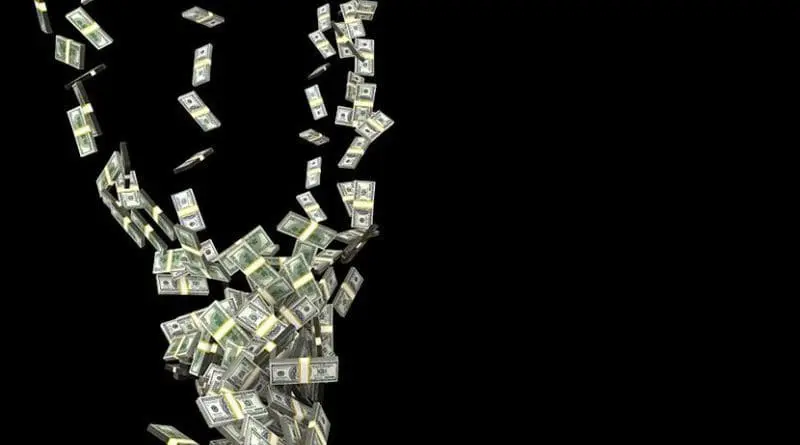The Good, The Bad And The Ugly Credit Crisis – OpEd
By MISES
By Robert Aro*
June begins and we are now two months past the dark days of the Great Lockdown, when the Dow closed at 18,592 points on March 23. Despite having no duty to protect the stock market, investor’s prayers were answered when the Fed announced one of the greatest anticapitalist interventions the nation has ever seen. The extensive new measures to support the economy promised a vast array of credit facilities to “support households and businesses” by supporting “the flow of credit” in times of crisis.
Let’s see how the central bankers have saved the economy since:
The Fed now has $106.9 billion in loans (assets) on its balance sheet, a number that was only $1 million, or virtually nil for a central bank as of March 1. Of this $106 billion, $49.2 billion is from the Paycheck Protection Program (PPP) Liquid Facility and $34.9 billion from the Corporate Credit Facility LLC (CCF LLC) used to buy corporate bonds and exchange-traded funds (ETFs).
The remaining loans on the balance are for other expensive anti–free market facilities, but they are lesser known, because “Main Street” doesn’t directly partake in them (i.e., Primary Credit, Primary Dealer Credit Facility, Money Market Mutual Fund Liquid Facility, and the Commercial Paper Funding Facility II LLC).
Also recall that the Main Street Lending Program, the Municipal Lending Facility, and the Term Asset-Backed Securities Loan programs still have yet to open. The Financial Times cited a calculation made by TD Securities regarding the lending facilities:
That is still less than 4 per cent of the at least $2.6tn the central bank has said it would make available across an unprecedented range of asset classes.
So despite the small uptake of Fed loan programs, the balance sheet has nearly doubled over the last two months reaching a new high of $7.097 trillion. This is due to the Fed’s near doubling of Treasury holdings since March, currently at $4.110 trillion and an increase in mortgage-backed securities (MBS) purchases by approximately $500 billion, currently at $1.835 trillion.
The numbers are so large that they become difficult to fathom. However, we can try to predict what the Fed will say at the conclusion of next week’s committee meeting. Keep in mind that we don’t have many “good outcomes” to hope for so much as less painful ones.
Starting with the good: maybe the Fed calls the crisis over and it begins to curtail or even stop making loans and asset purchases. If the economy is reopening, consumers are feeling confident, and liquidity concerns have been met, then perhaps there will be little need to keep expanding the balance sheet.
The bad: the Fed could say the crisis is nearing an end and may choose to keep providing stimulus until it maxes out its trillion-dollar facilities. In order to do this, they will need to convince us that the crisis is not yet over but that it will be if only a little more liquidity is injected into the economy.
The ugly: This would be the worst of all scenarios. It’s possible that regardless of whether the crisis is over or not the Fed will find reasons to continually make Treasury and MBS purchases, and even extend the loan programs into perpetuity, justifying it using nothing more than fear tactics and Fedspeak.
If this is the case, and we hope it’s not, then the March 23 announcement may have started a new era of central banking for developed economies—one in which the balance sheet and money supply become set on a parabolic trajectory with no chance of ever coming down. Some may say it’s a crisis due to the virus, liquidity, solvency, consumer confidence, or consumer spending, but does it really make a difference?
No matter the crisis, we could bet the answer will always be the same and that perpetual quantitative easing was always on the agenda. Maybe this isn’t anything terribly new after all? Perhaps it was nothing but the natural progression of a “central plan” that advances whenever the next crisis appears? If the last crisis was mortgages, this one is loans and bonds. When the next one is stocks, will anyone be surprised?
This article was published by the MISES Institute

